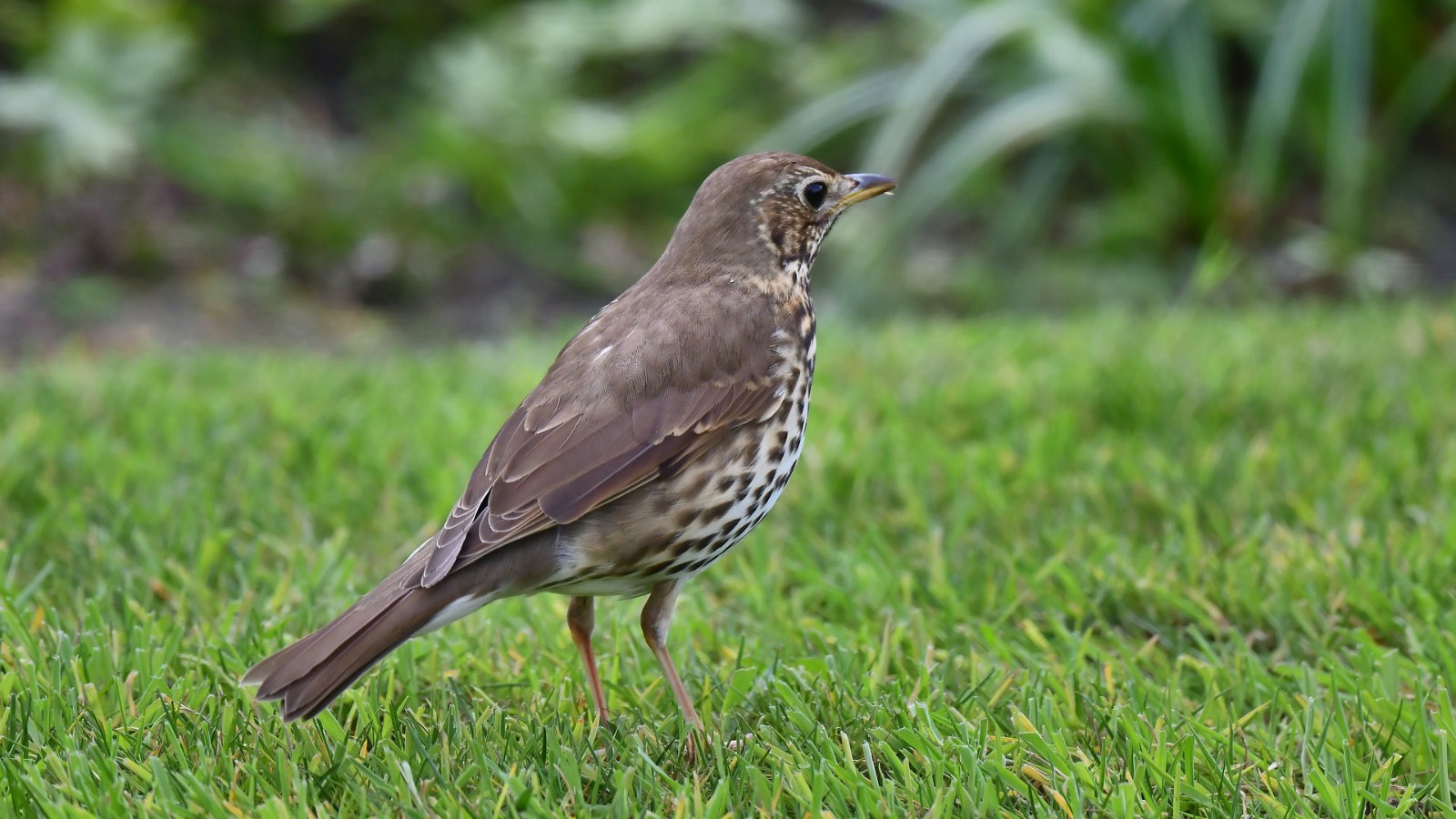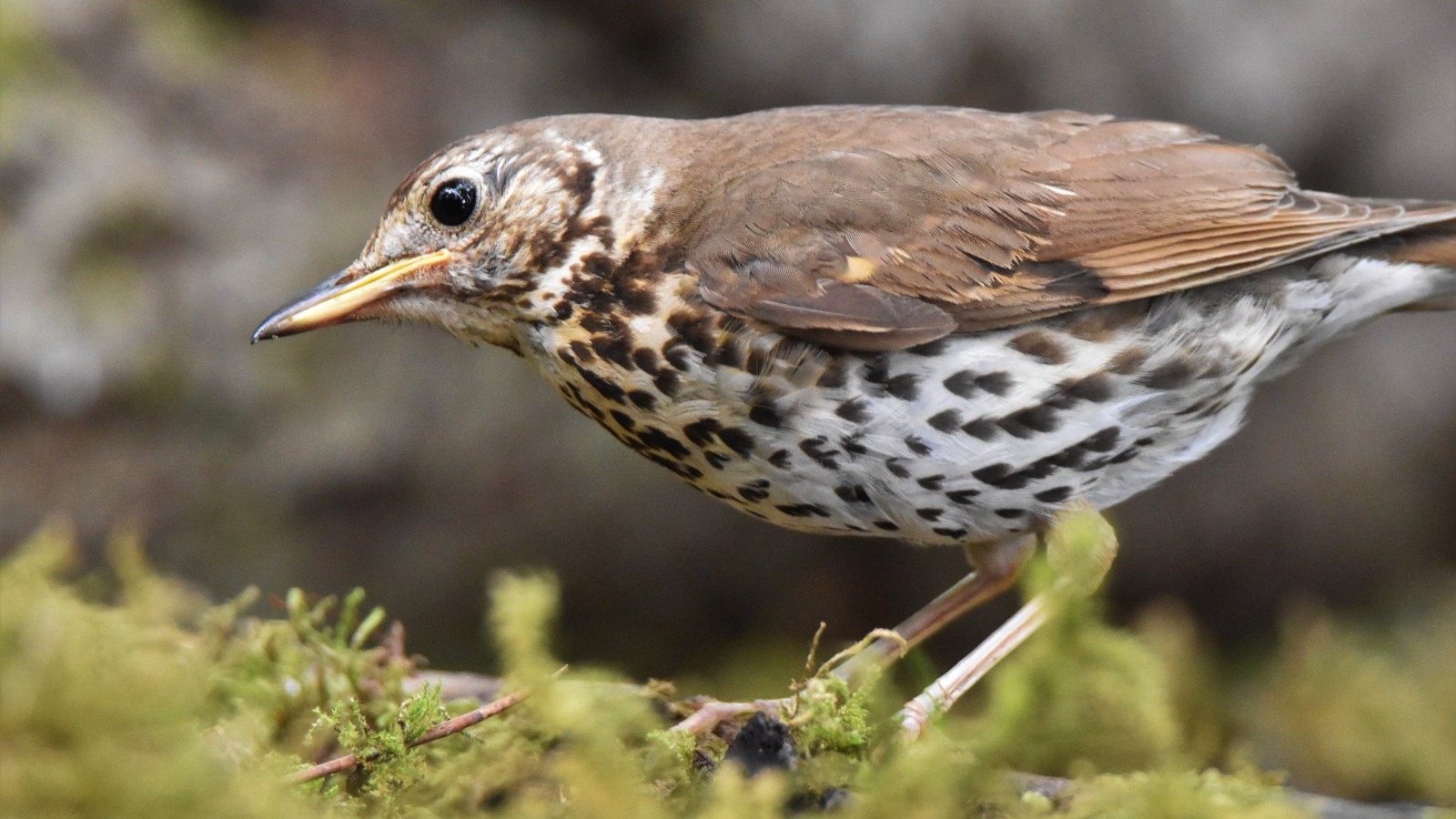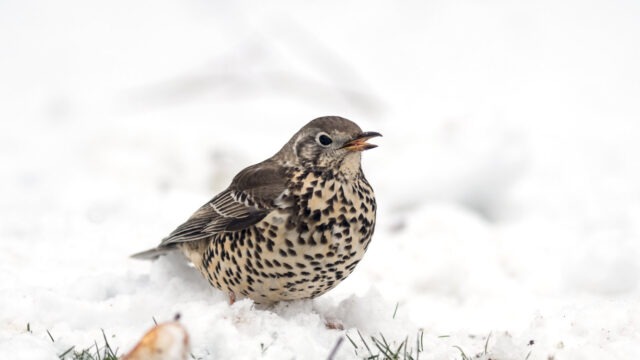Overview
The song thrush has a wide diet similar to many thrushes, eating earthworms, snails, fruit and berries. When feeding on the ground they hop, run and stand with their head on one side listening for worms, pouncing then pulling them from the ground. Snails form another large part of their diet, especially in drier weather when ground is too hard to find worms: they bash the unfortunate snail on a stone (known as an ‘anvil’) to break the shell and get at the tasty soft body. They had best not hang about too long before eating it though or they risk the opportunist blackbird sneaking in and stealing their hard won supper – really most unneighbourly! Over recent years the song thrush has been declining in Britain, and competition with the very successful blackbird is one possible factor contributing to the song thrush decline.
The song thrush is resident all year in Britain, with some extra birds arriving from continental Europe for winter, but in much smaller numbers than the winter blackbird arrival. Flight is fast and direct. It breeds in mixed and deciduous woodland, farmland, parks, well vegetated gardens and bushy areas. The nest hidden in ivy, hedges or trees, is a mossy bowl with a smooth mud lining.
Description
The song thrush is a very smart attractive bird. It is not as large as the similar mistle thrush (Turdus viscivorus) and slightly smaller than the blackbird with a medium-sized well-proportioned body. The head is not too large or heavy and tail not too long, giving an overall ‘well-balanced’ look.
The main plumage feature is the striking dark brown ‘spots’ on a yellowish buff-coloured breast, which fades to white below. Upper parts, wings, head and tail are brown. If seen in flight you might notice the rusty orange-buff underwings or ‘armpits’ which blends into the buff breast. In comparison the mistle thrush has white underwings. The spots themselves are triangular or ‘arrow-head’ shaped and often arranged in lines. The most likely bird to confuse the song thrush with is the mistle thrush: the breast spots on the mistle thrush are darker, bolder and more rounded than song thrush and arranged irregularly on a paler creamy or white colour background. Also the mistle thrush is much larger than the song thrush with a big chunky body and comparatively small head.
Call & Song: Not surprisingly given its name the song thrush is known for its singing abilities, and it would make a very strong contestant in the bird equivalent of ‘X Factor’. The song is clear and flutey with similar warm tones to the blackbird, but more variety with changes of pitch and pace and only a few brief pauses. The song thrush’s individual stage act is to repeat notes, groups of notes or phrases two or more times. So if you hear what sounds like a blackbird repeating himself, you know it must be a song thrush! The main call is a sharp quick ‘tsip’ – said to be like a person ‘tutting’, and alarm call an energetic rattle of scolding notes ‘tix-ix-ix-ix-ix….’, higher-pitched than a blackbird’s alarm.
Latin name: Turdus philomelos
Size: 20 – 23 cm
In The Garden
As the song thrush is a specialist snail-eater, another possible cause of their decline is the increased use of slug bait or ‘molluscicides’ in gardens to kill slugs and snails. One way you can help them out is to make sure slug bait or similar unpleasant chemical pesticides are not used in your garden: the song thrush is one of nature’s natural snail controllers. In Britain the song thrush is most numerous in south-east England and East Anglia. They require trees and bushes plus open grassland with moist soil and plentiful supply of invertebrates. The reduction in numbers (since the 1970’s) has been most severe in farmland, so gardens of all shapes and sizes represent an even more important habitat for the song thrush.
Did You Know?
Early settlers in Australia and New Zealand took song thrush with them to remind them of home in Britain. While the song thrush didn’t thrive in Australia they found the damper more British climate of New Zealand much more to their liking and are now one of the commonest garden birds in that country.



